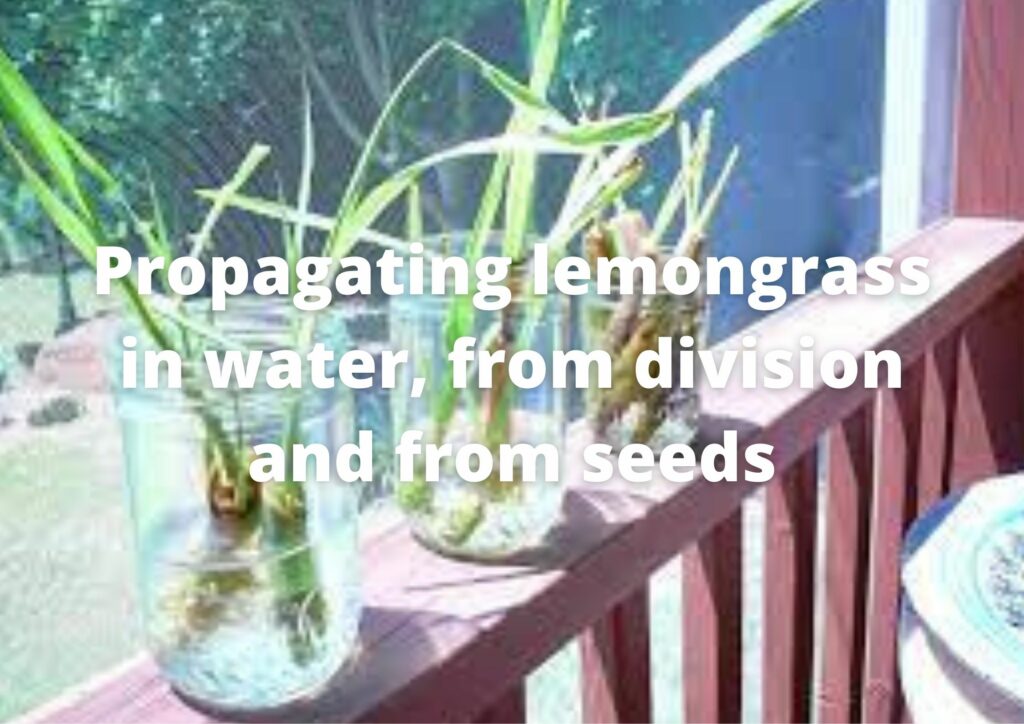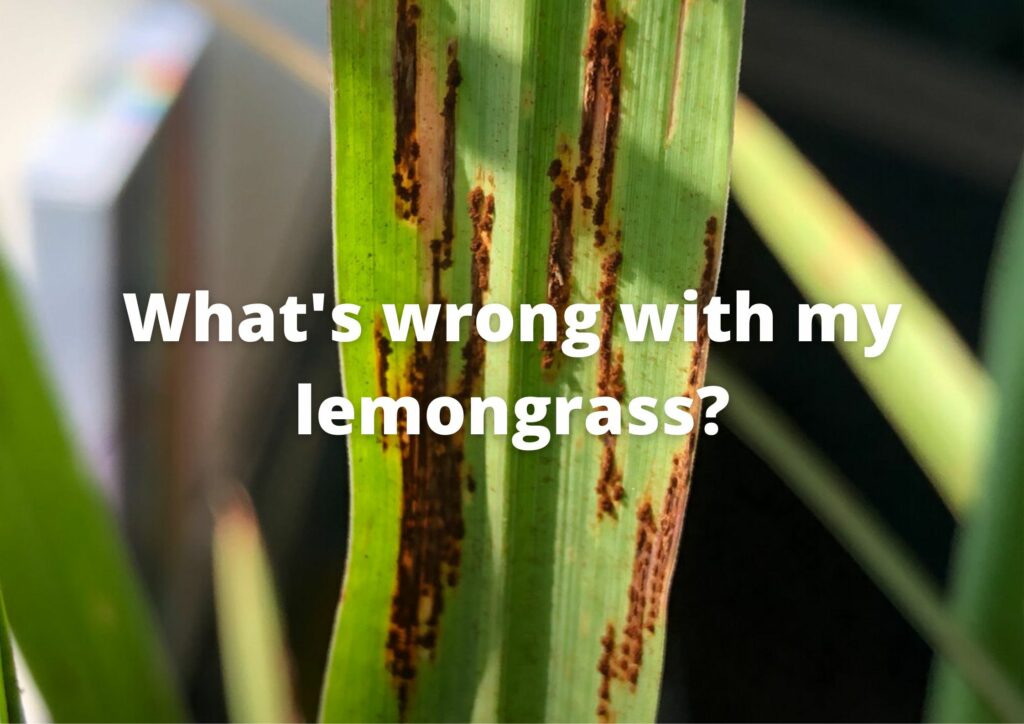How long does it take to grow lemongrass? How to Grow Lemongrass?
Gardeners who are passionate about Asian cuisine can grow their own lemongrass, which will add a fresh, citrusy flavor to soups, curries, or fish dishes. For Thai food lovers, here are some tips to help you grow lemongrass. It is unlikely to survive winters outside USDA. However, it can generally provide you with usable stalks prior to autumn frosts.

You may also want to bring the grass indoors during the winter months. It will refresh the indoor air with its citrus aroma and enhance your cooking with its unique citrus flavor. Lemongrass needs full sun, well-drained soil rich in organic matter, and a lot of moisture. After sowing the seeds, plants will be ready for harvest within 75 to 100 days. This article will tell you plant care tips you need to know to grow lemongrass at your home.
Lemongrass Characteristics – Does lemongrass come back every year?
Lemongrass grows from rhizomes. It can grow up to 3 feet when grown as an annual, and up to 6 feet in favorable conditions. The width of its arching, serrated blue-green leaves is 1/2 to 1 inch. The rhizomes can survive winters up to USDA Zone 8b. However, it will not stay green in areas higher than 9.
Although “Evergreen” might not be the right description, the West Indian lemongrass leaves redden in winter and spring, while East Indian varieties have red stems and leaf sheaths all year. West Indian lemongrass seldom flowers. Lemongrasses, which are both insect-repellent and snake-repellent, are cultivated for their leaves.
Top Lemongrass Varieties – best lemongrass variety
- Cymbopogon Citratus: This West Indian variety is the most popular and flavorful. According to Logee’s Greenhouses, it is “larger and more flavorful than” the East Indian species.
- Cymbopogon flexuosus var. flexuosus var.: This East Indian variety of lemongrass is more seedy than the West Indian one, has red stems, leaf sheaths, as well as being more invasive in areas where it is hardy.
- Cymbopogon flexuosus var. albescens is the “white” East Indian variety that lacks the ruddy coloring and is therefore considered less suitable for oil production.
Lemongrass planting time – When is the best time to plant lemongrass?

Lemongrass can be planted in the garden, but it is not necessary. You can also keep it in a large container all year, if desired.
Lemongrass can be planted in the spring when nighttime temperatures rise above 40 degrees Fahrenheit. If you plan to move an indoor plant outside, slowly acclimate it to outdoor conditions. This means putting it in shade and then exposing it to more sunlight each day.
Where does lemongrass grow best?
Pick a spot in full sunlight with well-drained, fertile soil. The West Indian grass doesn’t need to be pickedy. It can grow in any type of soil with a pH between 5.8 and 8.4. East Indian lemongrass prefers acidic soil with pH between 5 to 5.8.
How to plant lemongrass?
You should always check your soil for any signs of insufficient fertility or excessive weight before you plant your plants.
- Water the lemongrass, then remove it from the pot and plant it in the ground in the same depth as it grew in its pot.
- Place more than one plant 3 feet apart.
- You should water the plant until it is established.
Can you grow lemongrass in a container?

Lemongrass can be grown in containers. Large plants will need a pot that is at least 1 foot wide. You can also use a 5-gallon bucket with drainage holes in the bottom. You can fill it with an organic compost potting mix.
- Start with a small plant. Choose a smaller pot and then transfer the grass to the larger one after the container has filled up.
- Lemongrass grown in containers will need more water than if it were growing in the ground. It is best to bring it inside before the autumn temperatures drop below 40 degrees Fahrenheit.
- It will be able to join other indoor plants on a south-facing windowsill that receives at least 6 hours of sunlight per day and temperatures above 60°F.
Watering Lemongrass – Does lemongrass need lots of water?
Lemongrass is native to hot and humid climates. It needs to be kept moist but not too wet. Plants in pots will need to be watered daily, while those in the ground may only require irrigation when it is raining. Regular misting is a great way to keep lemongrass happy when the humidity is low.
If you decide to move your plant indoors during winter, you’ll need to reduce the amount of water that you give it. Lower light conditions can lead to the rotting of the grass’s roots.
Fertilizing Lemongrass – Does lemongrass need fertilizer?
Your potted lemongrass will grow quickly if it is fed with a balanced liquid food like 10-10-10 at half strength or every 2 weeks at full strength. It is best to not fertilize it indoors in winter.
This will provide the plant with nitrogen. To meet its nitrogen needs, you can feed the in-ground lemongrass plants once a month during summer with a balanced fertilizer like 10-10-10 or 5-5-5 according to the label.
Pruning Lemongrass – Can you prune lemongrass in the fall?
Yes, Lemongrass grown outdoors should be cut down to 6 inches when it is dormant. This will encourage it to grow back stronger once the weather warms up again. If you keep your lemongrass indoors on a sunny windowsill, it is best to trim it to about 1 foot before moving it outside in spring. When trimming grass, or serrated leaves, gloves are recommended.
Propagating lemongrass in water, division and seeds

You can get inexpensive lemongrass plants by purchasing fresh stalks from the supermarket. Place them in a transparent glass jar or glass on your windowsill and add a few inches of water to cover their bases. They will root in about two weeks.
Alternatively, you can also divide plants you already own to create multiple plants by simply digging up the plant and separating the rhizomes. Each division should have its own roots.
Sprinkle the seeds on a moist and sterile seed starter mix, and then press them down into the mix. They will sprout in 5 to 21 days if they are kept at 68 to 70°F in a sunny location.
Safety Considerations – Is lemon grass toxic to dogs?
Lemongrass leaves have sharp serrations that can cut skin if they are not handled with care. It is best to use gloves to harvest your lemongrass. Lemongrass is edible for humans. However, it can cause digestive upset in pets and horses. Although it isn’t very common, it can cause death in horses. However, it is important to keep it away from your pastures.
Lemongrass pests and diseases – What’s wrong with my lemongrass?

- Lemongrass can rust in humid climates. This is especially true if it’s grown close to other species. The small yellow spots on the leaves will eventually turn into brown spots or lesions. The best way to relieve the symptoms is to thin out your grass clump and spray it with a fungicide.
- However, if plants are kept too dry, spider mites can cause yellowing or white-speckling to lemongrass leaves. You can kill them with strong water. To prevent them from returning, water and mist your lemongrass plants regularly.
Harvesting Lemongrass – When is lemongrass ready to harvest?
When your lemongrass has grown to at least one foot, you can trim it when you are ready to use it for cooking. Trim the outermost stalks when harvesting this herb.
If you don’t plan to keep your plant indoors in winter, you will want to harvest it all–as per the steps below–just before the first frost in fall. You can freeze the “scallions”, but you may also want to dry them for Asian recipes and teas.
If you don’t know the best way to collect it, instructions on growing lemongrass will not help.
- A lemongrass stalk should be cut off at the bulb’s level.
- Take out any leaves or woody sheaths. Keep the lower third of the stalk intact.
- Cut the leaves into small pieces to preserve them. Then, dry them in a warm, dry place.
You can preserve lemongrass “scallions” by placing them in freezer bags right after harvest. Place the bag in the fridge for up to one month, or in the freezer for up to six months. Keep dried lemongrass leaves in a sealed container, inside a dark and cool cupboard.
